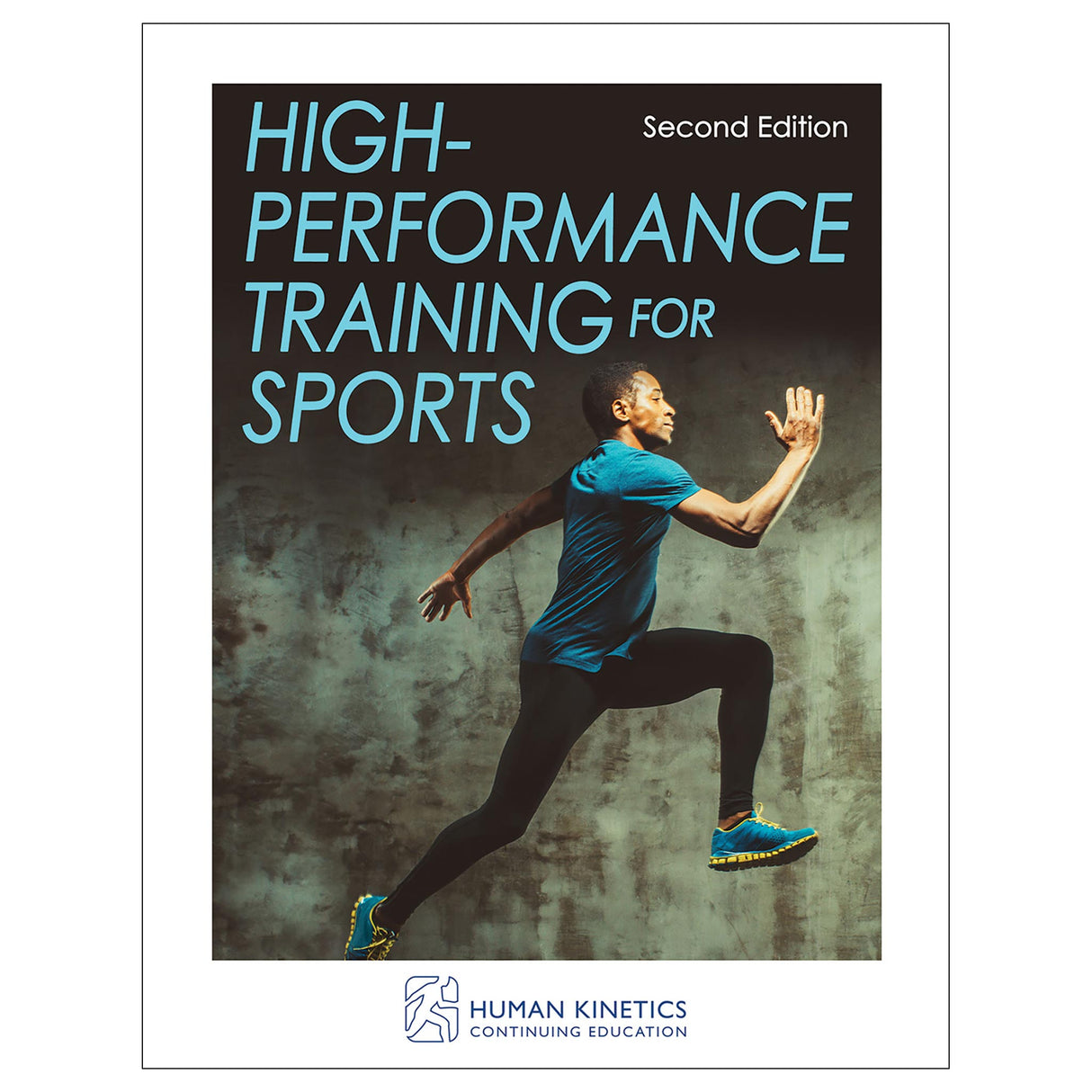High-Performance Training for Sports 2nd Edition Online CE Exam With Print Book
Author: Human Kinetics
$152.95 CAD
Human Kinetics strongly recommends that you complete your exam within the calendar year of your date of purchase to ensure approved credits do not expire for your organization.
- High-Performance Training for Sports, Second Edition, book
- Online continuing education exam
Combining the latest science and research with proven training protocols, High-Performance Training for Sports will help you accomplish three critical goals for your athletes:
- Establish and develop resilience
- Cultivate athletic capabilities
- Enhance and sustain performance
After reading the book, certified professionals can take the companion CE exam to earn continuing education credits.
Learning Objectives
- Assess the physical capacity and readiness of an athlete for training and sports.
- Explain the youth physical development model.
- Articulate methods of developing strength and power, speed, and endurance in young athletes.
- Define mental health and summarize principles and strategies to promote positive mental health.
- Illustrate efficiency of movement to maximize performance.
- Explain the trunk training continuum.
- Assess the flexibility and mobility of an athlete.
- Create appropriate intervention strategies for improved flexibility and mobility.
- Explain approaches to monitoring training load.
- Identify strategies that have a positive impact on coaching and leadership.
- Explain core principles of strength training for sport performance.
- Define complex training.
- Evaluate sprint technique and performance in novice to elite athletes.
- Describe proper training methods for jumping and landing.
- Explain agility and principles for coaching change-of-direction ability.
- Measure anaerobic power for sports.
- Employ proper training and supplementation methods for anaerobic power training.
- Employ proper training methods for aerobic power training.
- Describe the language of cueing and the communication loop.
- Summarize the science of predictive coding.
- Explain the general adaptation syndrome theory and the use of training units.
- Employ proper preseason, in-season, and off-season training for a sport.
- Describe the fitness–fatigue paradigm.
- Discuss the importance of tapering in the physical preparation of athletes.
- Examine the impact of various recovery modalities, including yoga, sleep, and hydrotherapy.
- Foster a learning environment that contributes to high performance in sports.
Audience
Certified strength and conditioning coaches, sport performance training coaches, sport physical therapists and physiotherapists, and athletic trainers.Introduction: Understanding Modern Athletes
David Joyce and Daniel Lewindon
Part I. Establishing and Developing Resilience
Chapter 1. Understanding Athletes’ Capacity and Readiness
Michael R. McGuigan, PhD, CSCS*D, and Jo Clubb, BSc, MSc
Chapter 2. Working With Younger Athletes
Rhodri S. Lloyd, PhD, Jon L. Oliver, PhD, and Sean P. Cumming, PhD
Chapter 3. Promoting Mental Health
Samuel Cumming, MSc, Susan Wood, PhD, and James Bell, MSc, PhD
Chapter 4. Optimising Movement Efficiency
Matt Jordan, PhD, CSCS
Chapter 5. Developing Trunk Strength and Coordination
Loren Landow, CSCS*D
Chapter 6. Gaining Flexibility for Strength and Performance
Vernon C. Griffith II, CSCS*D, TSAC-F*D
Chapter 7. Fuelling for Training and Performance
Dan Ellis, SENr, and Graeme L. Close, PhD
Chapter 8. Monitoring Fitness and Performance
Stuart Cormack, PhD, and Aaron J. Coutts, PhD
Part II. Developing Athletic Capabilities
Chapter 9. Understanding and Influencing Interpersonal Dynamics in the Training Environment
Brett Bartholomew, MS Ed, CSCS*D, RSCC*D
Chapter 10. Strength Training
Eamonn P. Flanagan, PhD
Chapter 11. Speed Training
Jean-Benoit Morin, PhD, and Stuart McMillan
Chapter 12. Jumping and Landing Training
Jeremy M. Sheppard, PhD, and Dana Agar-Newman, MSc
Chapter 13. Agility Training
Sophia Nimphius, PhD
Chapter 14. Anaerobic Power Training
David T. Martin, PhD
Chapter 15. Aerobic Power Training
Martin Buchheit, PhD, and Paul Laursen, PhD
Chapter 16. Cueing for Training and Performance
Nick Winkelman, PhD
Chapter 17. Translating Athletic Qualities Into Sport Performance
Duncan N. French, PhD
Chapter 18. Managing Mental and Physical Stressors
John Kiely, PhD
Part III. Enhancing and Sustaining Performance
Chapter 19. Programme Design
Benjamin Rosenblatt, PhD, ASCC
Chapter 20. Preseason
Darren Burgess, PhD
Chapter 21. In-Season
Darcy Norman, PT, ATC, CSCS
Chapter 22. Off-Season
Teena Murray, MS, and Derek M. Hansen, MSc
Chapter 23. Warm-Up and Cool-Down
Rett Larson, MS
Chapter 24. Peaking
G. Gregory Haff, PhD, CSCS*D, FNSCA, AWF-3, ASCC, ASCA-2
Chapter 25. Recovery
Shona L. Halson, PhD, and Lorena Torres-Ronda, PhD
Chapter 26. Learning
Sam Robertson, PhD, and Jacqueline Tran, PhD
Chapter 27. Retraining the Injured Athlete
Daniel Lewindon, MSc (SEM), MSc (S&C), and David Joyce, MPhty, MSc, MBA





